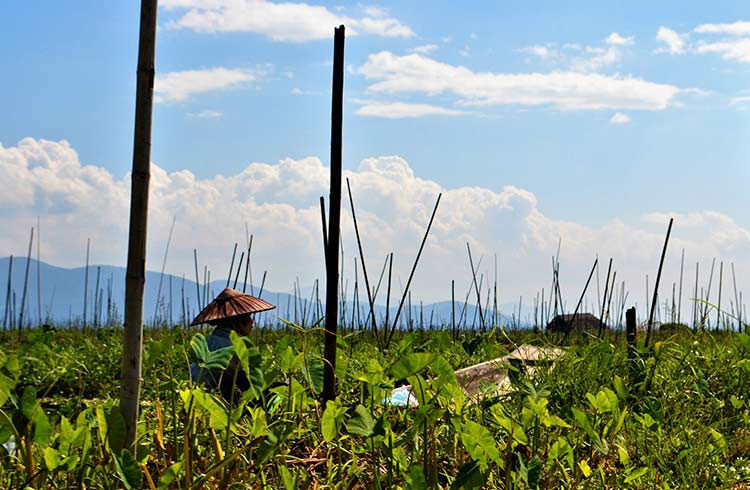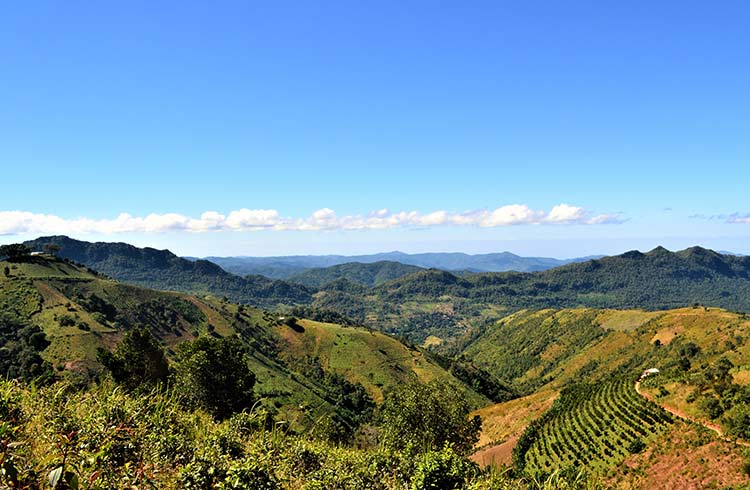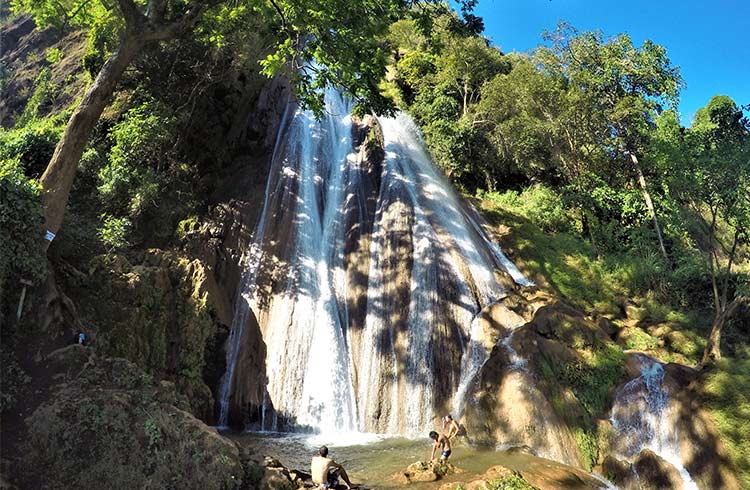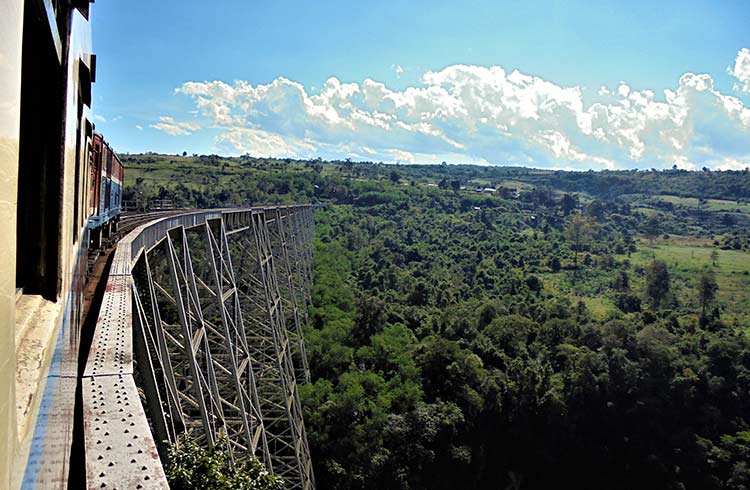Restricted Areas for Travelers in Myanmar: What You Need to Know
Ethnic and religious conflicts continue in Myanmar making travel to these areas dangerous and in some cases, illegal. Find out where you can explore safely, and where strict restrictions are in place.
 Photo © Sergio Molino Aguado
Photo © Sergio Molino Aguado
The Myanmar government retains strict control over access to all parts of the country. As it conducts military actions against so-called dissident groups certain regions will be put off limits. This may change frequently. Fortunately, the Myanmar government maintains a comprehensive list of towns, cities, and regions where it is permitted to travel. The list first appears in Burmese, but scroll down the page for the English language version. If that site doesn't work, which happens occasionally, here's a good alternative to "ultimate tourism transparency".
Where you can explore safely
But what might happen if you choose to venture into a restricted area? If you’ve unknowingly ventured into a restricted area, the locals will likely call the police – who will come faster than you’d expect – to inform you that you shouldn’t be there. Regardless of whether you’re acting like you weren't aware or if you genuinely had no idea, the police will escort you to a train station or airport to make sure you leave the area safely.
While this sounds like a riveting adventure, we’d advise against doing this. Not only are you taking a great risk, but their resources are limited – don’t waste the local police’s time on your stupidity. Always do your research before venturing off the beaten path in northern Myanmar.

Simple and flexible travel insurance
You can buy at home or while traveling, and claim online from anywhere in the world. With 150+ adventure activities covered and 24/7 emergency assistance.
Get a quoteRestricted regions
The regions most likely to be (at least partially) off-limits are:
- Rakhine due to the conflict with the Rohingya
- Kachin, and Shan because of their proximity to the border areas of Laos and Chine (also known for drug running),
- Sagaing, on the border with Bangladesh.
The following summary was correct at the time of writing but may change. Check the Myanmar government site to be sure. If that site is down, here's a good alternative from "ultimate tourism transparency".
Restrictions in Sagaing Region
In Nanyun surroundings, permits are needed. Picturesque towns like Katha – home of George Orwell and where he was inspired to write the famous novel, “Burmese Days” – are open to foreigners, and safe for travel.
Restrictions in Kachin Region
Kachin region is an especially alluring destination for keen hikers and extreme sports such as rafting. While the landscape up there is unique, it’ll be one of the most expensive regions to visit in Myanmar. With limited infrastructure and various restrictions, travelers will be forced to take expensive flights to get there, stay in the few lodgings that allow foreigners, and hire guides that are aware of the restricted areas.
Restrictions in Shan State
Shan state is home to one of the biggest tourist hot spots in Myanmar, Inle Lake. However, it’s located in the same region that has a fair few restrictions.

Shan State is the largest in Myanmar, and its sheer size and length of conflictive borders are the main cause for issues. Some areas toward the Chinese and Lao borders remain inaccessible, but there are still plenty of places to travel safely.

The trekking routes from the hills to Mandalay, Lashio–Hsipaw and Kyakme–Pwin Oo Lwin, offer a great combination of Shan tradition, remains of the colonial era, and affordable spots to go hiking. By train the route passes over the Goteik Viaduct – an engineering colossus of its era, and an important landmark in Myanmar.

Apart from these routes, the most in-demand trek in Shan State goes from Kalaw to Inle Lake, which is a 1–3 day hike through fields and rural villages. Although this is a well-trodden trail, it’s a great way to see how rural life operates in the Shan State.
Travel insurance coverage
In many areas of Myanmar, ethnic tensions and armed conflict continues. This ongoing conflict can affect your travel insurance coverage.
It's important that you are aware of your government's travel advice for Myanmar. Generally, if you travel to a destination that your government says you shouldn't, your travel insurance will likely be compromised. Some governments have a lower level of tolerance and advice such as "against all but essential travel" is sufficient to invalidate coverage.
The information may change often and with little notice, so check with your government's travel warning advice for Myanmar and with your travel insurance provider.
3 Comments
we're cycling myanmar in jan/feb 2020. we'd like to know about entering the country by land, from thailand. we're running up against some obstacles, including conflicting rules from the embassy in paris, like we need a special permit to enter the country on a bike!! other bikers just rode in!! i'm told there can be extra restrictions as i'm an american, my wife british. any advice would be helpful; also about the trip in general, ie places to stay!!! thanks in advance.... gary
Gary - I'm not sure at what point you guys are planning to enter Myanmar, but I passed through the htee-kee border in the south, from Kanchanburi in Thailand to Dawei in Myanamar and I would really recommend it as a trip!
It would mean you'd begin your journey in an unique part of the country (Tanintharyi region), which is a bit out of the way otherwise, cutting right through some lovely country in the process.
The road is extremely bumpy however - even in a jeep the journey from the border to Dawei took 5+ hours if I remember correctly.
I think the Burmese border office in no mans land also prefer that you travel in some sort of registered way from the border, so that they know you're for sure on your merry way to Dawei, and not meddling around in the slightly contested / wild border areas.
Despite all this I actually do remember an old man from the Netherlands, who stays on the border with his wife, saying that he'd saw westerners cycle right on through.
Good luck sorting everything out!
As for restrictions on your US passport - I have no idea, apart from that there might be a slightly higher 'tax' when looking to sort out situations.. ha.
You can enter burma by bicycle at any northern border of thailand, each will just cost you cash. Tachilek is the best option for doing it legally,
But on other borders, like the one from mae hong son, (where I entered) you have to pay quite a bit of cash. It was 15000 baht for both sides, plus I had to sign a paper which said something like 'should anything happen to me in burma I'll be my own burden and 100 percent my own responsibility. I also did not get my thai visa stamped for exit because of the price I paid. Roads are pretty rough heading from northwestern thai/burma border but I managed to ride those by a roadbike. Most of the roads are NOT marked on google maps. I'm currently staying in northern shan region, city of hopang, I got here solely by bike. And keep riding it here. Plenty of tarmac roads